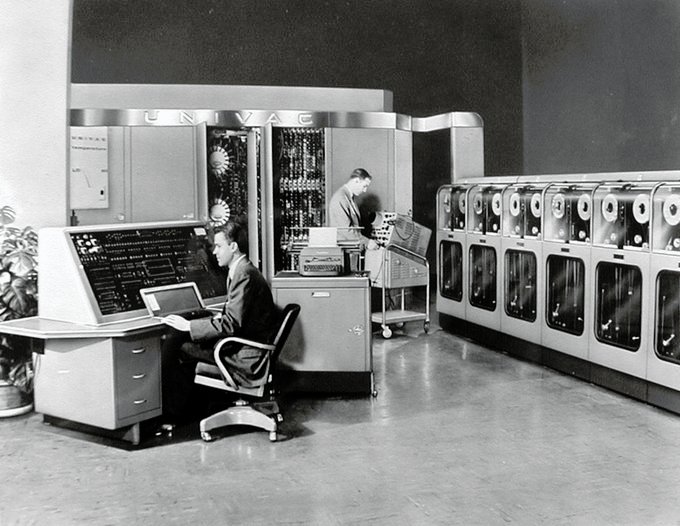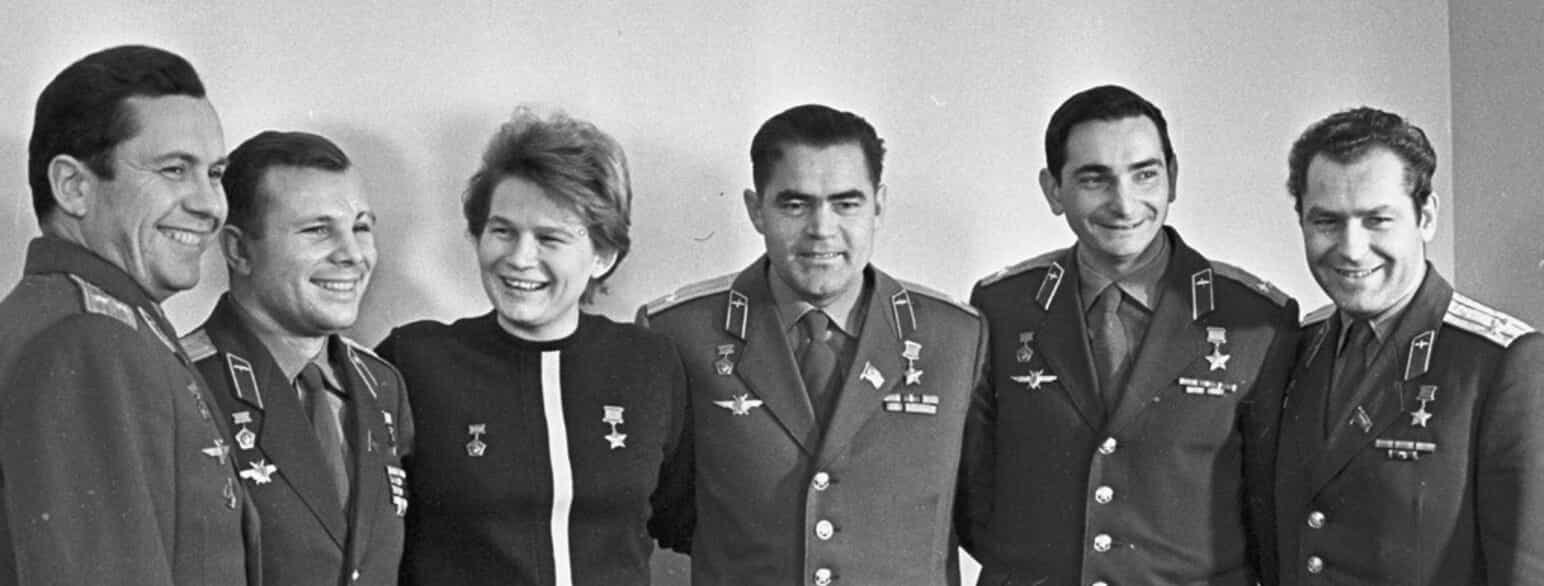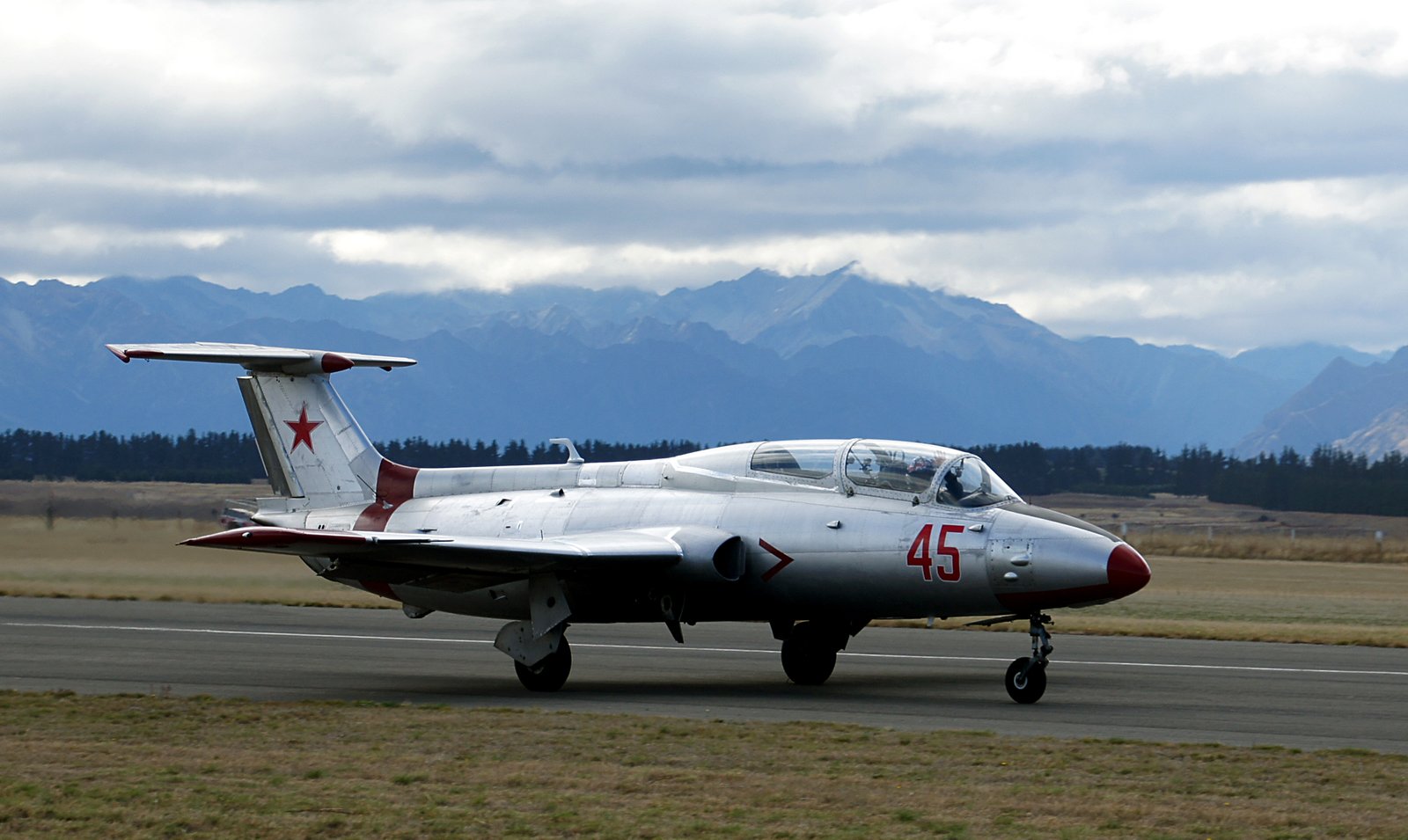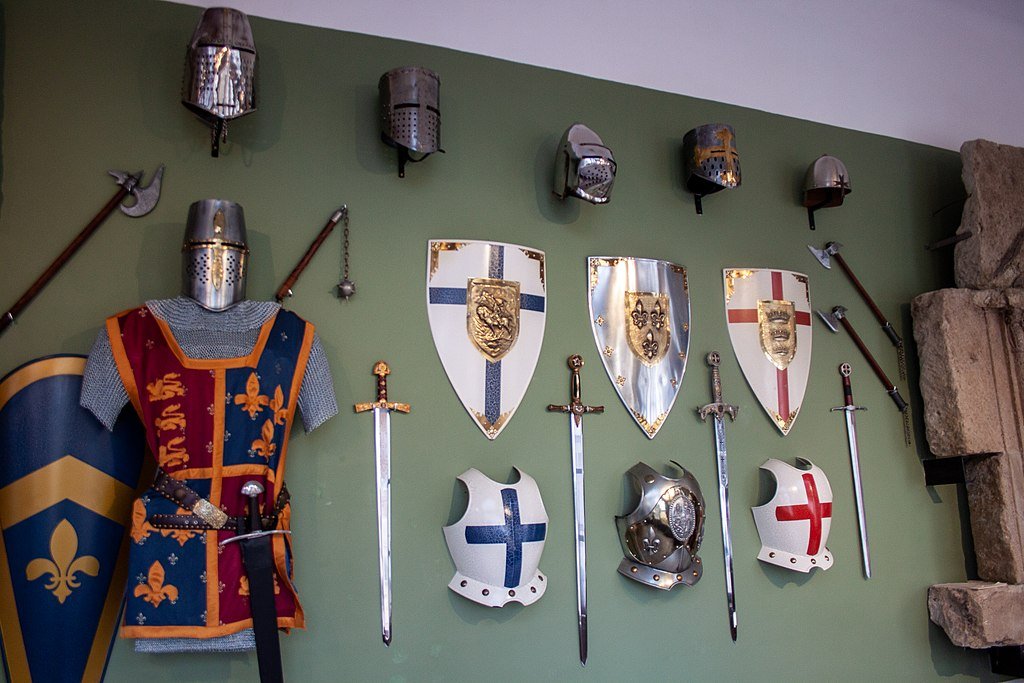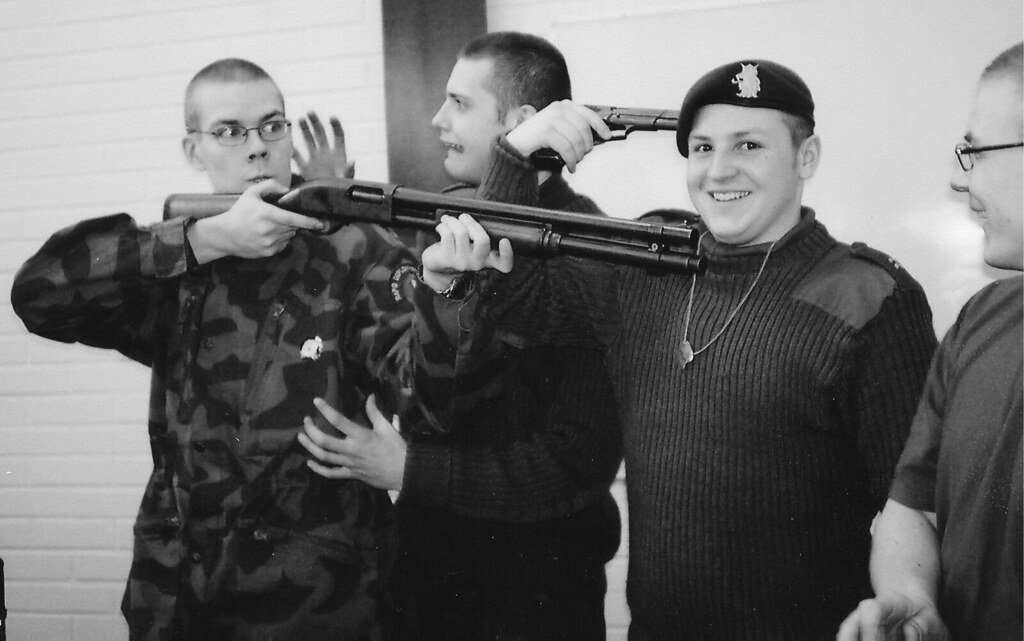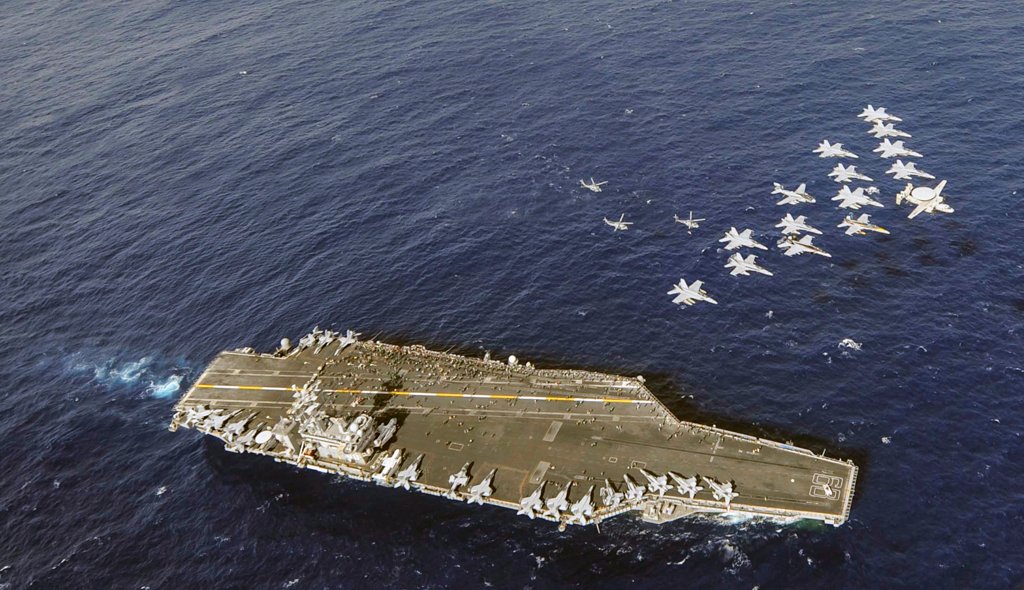The Cold War era marked a significant period characterized by the emergence of formidable military forces, with the Soviet Union positioned as a pioneer in technological advancements in aviation. Within the Soviet Air Force, an impressive array of fighter jets not only exemplified military strength but also etched a lasting legacy in aviation history. This blog aims to uncover the top 8 most iconic fighter jets that soared through the skies as integral components of the Soviet Air Force during this era.
Table of Contents
But before we embark on this exploration, let’s tackle some crucial and frequently asked questions:
What was the most renowned Soviet aircraft?
The most renowned Soviet aircraft undoubtedly includes the MiG-21 Fishbed. This lightweight, supersonic fighter jet emerged as an iconic symbol in the Soviet aviation arsenal during the early 1960s. Boasting a production run that exceeded 11,000 units, the MiG-21’s influence extends far beyond its initial deployment, as it continues to serve in numerous air forces worldwide, attesting to its enduring legacy and technological significance.
Which aircraft claimed the title of the first Soviet fighter jet?
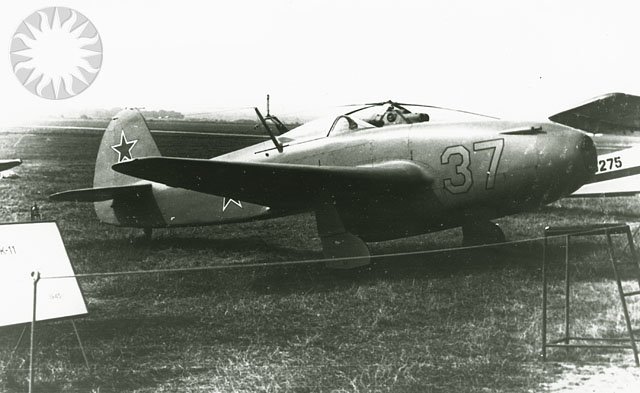
The first Soviet fighter jet was the Yakovlev Yak-15. Introduced in 1946, the Yak-15 marked a significant milestone as the Soviet Union’s inaugural foray into jet-powered fighter aviation. While its service was relatively short-lived and production numbers were limited, the Yak-15 played a crucial role in transitioning the Soviet Air Force from propeller-driven aircraft to the era of jet propulsion, paving the way for subsequent advancements in Soviet fighter jet technology.
What was the fastest Soviet fighter jet?
The title of the fastest Soviet fighter jet belongs to the Mikoyan-Gurevich MiG-25. Holding this distinction, the MiG-25 retained its status as the fastest crewed serially produced aircraft still in operational use as of 2018. It not only claimed the title of the fastest plane available for supersonic flights but also offered civilians the opportunity for edge-of-space experiences. The MiG-25’s exceptional speed solidified its place in aviation history, showcasing the Soviet Union’s prowess in developing high-performance fighter aircraft.
What is the latest Soviet fighter jet?
The latest Soviet fighter jet, the Sukhoi Su-57, represents the pinnacle of Russian military aviation. Also known simply as the Su-57, this fifth-generation stealth fighter combines advanced technology, superior maneuverability, and stealth features. Introduced to the Russian Aerospace Forces, the Su-57 showcases cutting-edge capabilities, including state-of-the-art avionics and weapons systems. As the newest addition to the Soviet legacy, the Su-57 underscores Russia’s commitment to maintaining a robust and modern air force, ensuring a formidable presence on the global stage.
With these questions addressed, we can now delve into the heart of the blog and unveil the remarkable stories behind the most iconic fighter jets of the Soviet Air Force.
1. MiG-15: The Jet that Changed the Game (1949)
The Mikoyan-Gurevich MiG-15, introduced in 1949, stands as a transformative force in aviation history. As the first successful swept-wing jet fighter, it reshaped aerial warfare dynamics. Playing a pivotal role in the Korean War, the MiG-15 showcased exceptional performance and agility, making it a feared adversary worldwide. Its swept-wing design allowed for higher speeds, improved maneuverability, and a distinct advantage over earlier straight-wing counterparts.
The MiG-15’s global recognition and respect solidified its status as an iconic Soviet aircraft, leaving an indelible mark on the evolution of military aviation during the Cold War era. Its influence extended beyond its era, influencing subsequent generations of fighter jets and contributing to the ongoing development of high-performance military aircraft in the modern era. The MiG-15 remains a symbol of innovation, highlighting the Soviet Union’s prowess in pushing the boundaries of aviation technology during a pivotal period in history.
2. MiG-21: The Workhorse of Soviet Aviation (1959)
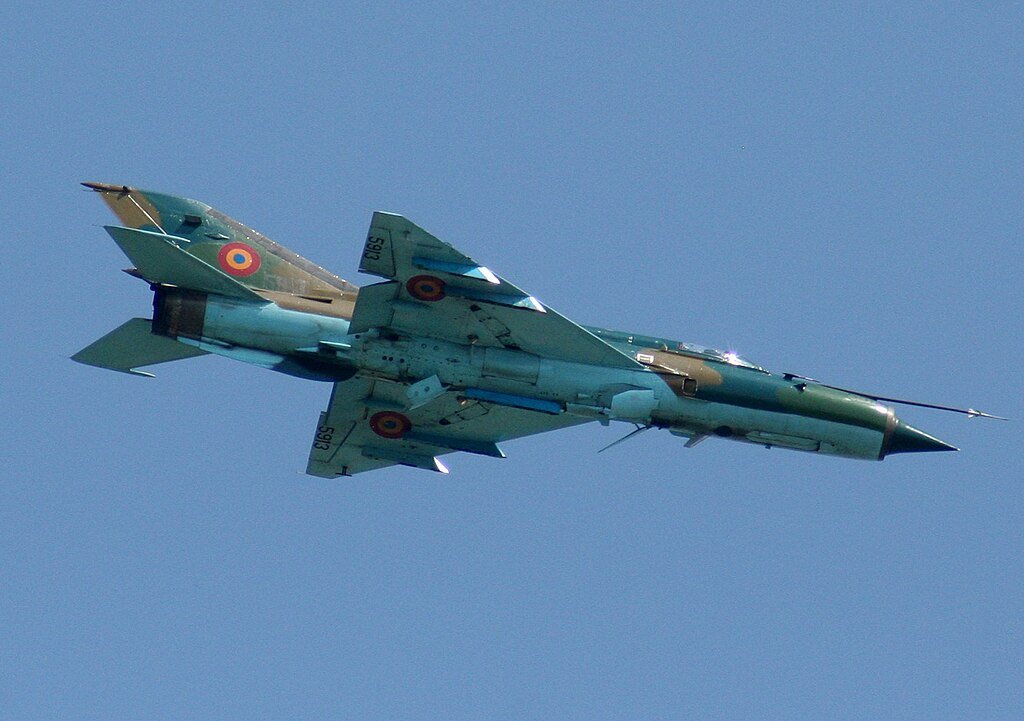
The Mikoyan-Gurevich MiG-21, nicknamed the “Fishbed” by the North Atlantic Treaty Organization(NATO), emerged in 1959 as the workhorse of Soviet aviation, leaving an enduring impact on military history. This versatile and highly maneuverable aircraft swiftly became the backbone of both Soviet and Warsaw Pact air forces. Renowned for its simplicity, affordability, and effectiveness, the MiG-21 represented a pinnacle in Cold War-era fighter jet technology. Its introduction marked a shift towards mass production, with over 11,000 units manufactured, solidifying its status as one of the most widely used jet fighters in history.
The MiG-21’s success can be attributed to its adaptability for various roles, including air superiority, ground attack, and reconnaissance. Its longevity in service, spanning several decades, underscores the aircraft’s enduring value and the Soviet Union’s strategic investment in a platform that could meet diverse operational requirements. The MiG-21’s legacy extends far beyond its initial introduction, standing as a testament to its remarkable design and the pivotal role it played in shaping the trajectory of Soviet and global aviation.
3. Su-27: The Flanker’s Triumph (1985)
The Sukhoi Su-27, known as “Flanker” in NATO terminology, emerged as a triumph of Soviet engineering when introduced in 1985. This air superiority fighter was a masterpiece, showcasing exceptional agility, an extended operational range, and formidable firepower. The Su-27’s introduction marked a significant milestone in Soviet aviation, setting a new standard for modern fighter aircraft. Its advanced capabilities and performance in combat situations earned the aircraft global recognition, establishing it as a benchmark for excellence in the field.
The Su-27’s legacy goes beyond its initial success, as it laid the foundation for the development of subsequent Flanker variants. The aircraft’s innovative design principles and technological advancements influenced the evolution of fighter jets, shaping the trajectory of aerial warfare. The Su-27’s enduring impact underscores its pivotal role in the Soviet Air Force and its lasting contribution to the advancement of high-performance military aircraft.
4. MiG-29: The Fulcrum of Soviet Air Power (1982)
The Mikoyan-Gurevich MiG-29, known as the “Fulcrum” by NATO, stands as another jewel in the crown of Soviet aviation. Emerging onto the scene in 1982, the MiG-29 was a strategic response to the evolving dynamics of Cold War aerial warfare, specifically designed to counter Western counterparts such as the F-15 and F-16. Its introduction marked a leap forward in technology, boasting a potent combination of speed, agility, and advanced avionics. The MiG-29 quickly earned a reputation as a formidable adversary in air-to-air combat, showcasing its prowess and versatility on the global stage. The aircraft’s capabilities contributed significantly to the Soviet Air Force’s air power, solidifying its place among the iconic fighter jets of its time.
The MiG-29’s impact extended beyond its immediate era, as many of its design principles influenced subsequent generations of fighter jets. Its legacy as a high-performance and versatile aircraft endures, reflecting the Soviet Union’s commitment to staying at the forefront of aviation technology during the later stages of the Cold War.
5. Su-25: The Grach’s Ground Assault Dominance (1981)
The Sukhoi Su-25, affectionately known as “Grach” or Rook, exemplifies the Soviet Union’s commitment to close air support. Launched in 1981, this ground-attack aircraft was designed to provide vital support to ground forces during military operations. Boasting robust armor and heavy weaponry, the Su-25 became a linchpin in supporting infantry and armored units. Its introduction marked a pivotal moment in the Soviet Air Force’s strategy, emphasizing the importance of dedicated aircraft for close air support missions.
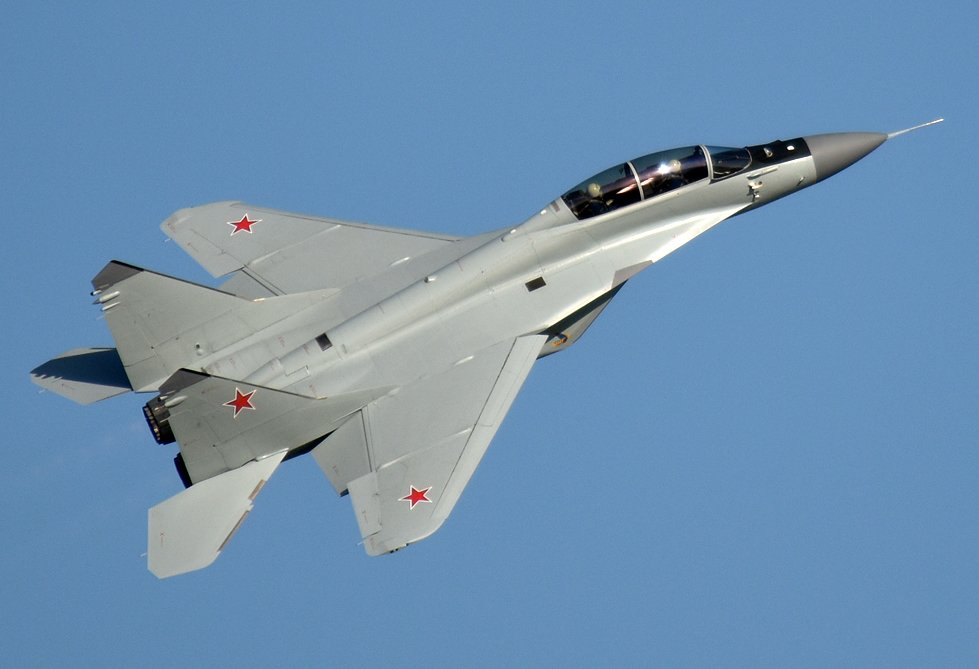
The significance of armored and heavily armed aircraft extended globally, proving to be a reliable asset in various conflicts. The Su-25’s effectiveness in low-altitude missions further solidified its role in ground assault dominance. Its rugged design, coupled with the ability to operate in challenging terrains, made the Su-25 a stalwart companion for ground forces, showcasing the Soviet Union’s commitment to versatile and powerful air assets.
6. Tu-95: The Bear’s Strategic Reach (1956)
The Tupolev Tu-95, introduced in 1956, holds a unique and crucial role in Soviet air power, even though it deviates from the conventional fighter jet archetype. Codenamed “Bear” by NATO, the Tu-95 is a long-range strategic bomber featuring a distinctive turboprop design. Beyond its imposing appearance, the Tu-95’s significance lies in its dual capacity to carry nuclear weapons and execute strategic reconnaissance missions. This dual functionality significantly enhanced the Soviet Union’s strategic capabilities during the Cold War, providing a versatile asset that could both deliver a potent payload and gather critical intelligence.
Despite not conforming to the typical fighter jet mold, the Tu-95’s enduring presence and strategic importance underscore its contribution to the broader spectrum of Soviet air power. Its deployment represented a melding of offensive and reconnaissance capabilities, showcasing the multifaceted approach the Soviet Union took in ensuring its dominance in the global strategic landscape.
7. Yak-3: The Agile Ace (1944)
The Yakovlev Yak-3, introduced in 1944, distinguishes itself as a standout among the most agile and effective Soviet fighter aircraft of World War II. Despite not garnering the same level of recognition as some of its counterparts, the Yak-3 earned its place in history with a lightweight design and exceptional maneuverability. Soviet pilots held a particular fondness for this aircraft, as its elegant performance allowed them to outmaneuver adversaries with ease. The Yak-3 played a crucial role on the Eastern Front, contributing significantly to the Soviet air war effort during a pivotal period in the conflict.
While the Yak-3 may not have achieved the same level of fame as other aircraft, its impact on World War II’s Eastern Front was substantial. The aircraft’s combination of agility and effectiveness made it a favorite among pilots, showcasing the Soviet Union’s commitment to producing formidable fighter planes even during challenging wartime conditions.
8. Su-24: The Fencer’s Versatility (1974)
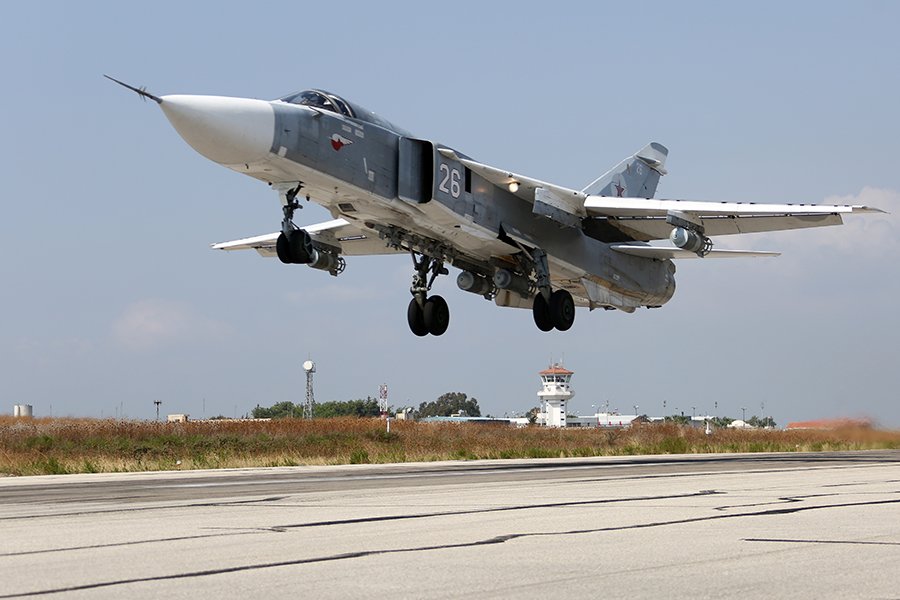
The Sukhoi Su-24, known as the “Fencer” by NATO, emerged in 1974 as a testament to Soviet ingenuity in the domain of tactical bombing. This swing-wing, all-weather attack aircraft showcased advanced features that set it apart in the realm of military aviation. Designed for versatility, the Su-24 possessed the capability to execute both low-level and high-level bombing missions, offering a strategic advantage in various combat scenarios. Its variable-sweep wings added a layer of adaptability, allowing the aircraft to optimize performance based on mission requirements.
Introduced during a critical period of the Cold War, the Su-24 became a versatile asset within the Soviet Air Force’s arsenal. Its capacity to navigate different mission profiles and adapt to changing combat conditions demonstrated the Soviet Union’s commitment to staying at the forefront of technological advancements in the field of tactical aviation. The Su-24’s legacy endures as a symbol of the Soviet Air Force’s adaptability and innovation during a pivotal era in military history.
The Soviet Air Force’s legacy is etched in the annals of aviation history through these iconic fighter jets. Each aircraft played a unique role, whether in air superiority, ground attack, or strategic missions. As we reflect on these marvels of engineering, we appreciate not only their impact on the Cold War but also their lasting influence on modern aviation technology. The echoes of their roaring engines and the stories of the pilots who flew them continue to resonate in the skies and the hearts of aviation enthusiasts worldwide.


